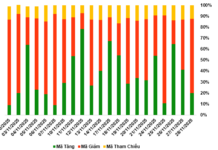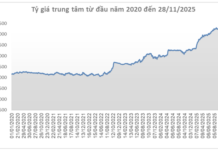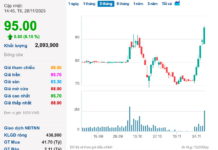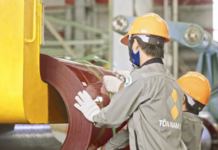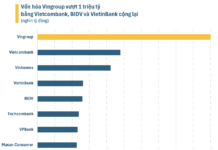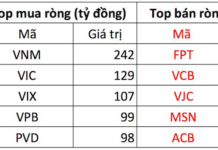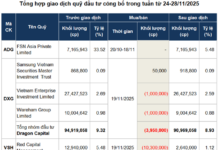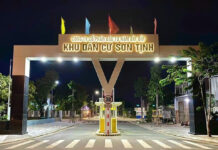Proposal for the Construction of 10 Diversion Dams
A study conducted by the Vietnam Institute of Water Resources (the primary research organization for the project to construct diversion dams on the Red River) has revealed that the riverbeds of the Red River and the Duong River have deepened significantly over the years. On the Duong River, the riverbed elevation has dropped by 4-6 meters, while on the Red River, near Son Tay, the riverbed has dropped by 5 meters. Along the entire length of the river, the widening of the cross-section has been a complex and dynamic process, varying from year to year after the flood season and from one section of the river to another.
Figure:
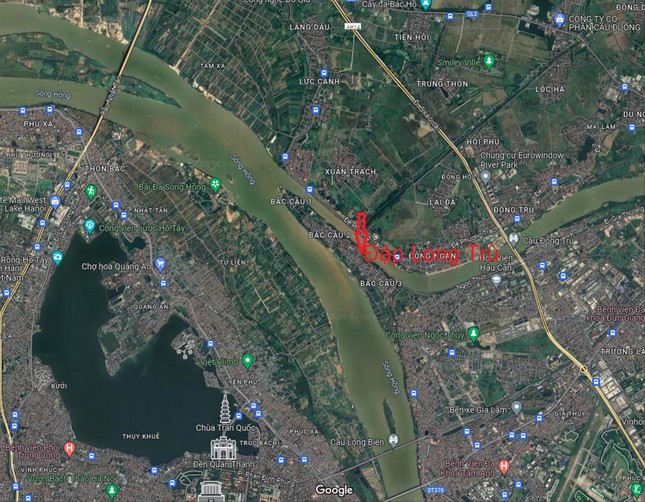
Caption:
According to experts, the construction of diversion dams on the Red River is entirely feasible.
The Institute’s assessment indicates that the lowering of the riverbed in the lower reaches of the Red River is having a profound impact on water intake for all irrigation systems. Many structures are exposed, resulting in water levels outside the river that are often lower than the invert elevation of the sluices. Notably, the Nhuệ River irrigation system (with the Lien Mac sluice as its headworks) has suffered severe environmental pollution, while the Bac Hung Hai irrigation system has sometimes operated at less than 50% of its original design capacity. Of particular concern is the lowering of groundwater levels throughout the Red River Delta, which has significant implications for agricultural production, local livelihoods, and the occasional paralysis of waterborne transportation.
Following the division of the lower reaches of the Red River into three sub-regions, the Vietnam Institute of Water Resources has proposed 10 locations for the construction of gated diversion dam structures (the Ba Lat structure on the Red River; structures on the Ninh Co River, Day River, Tra Ly River, Hoa River, Moi River, and Do Han on the Thai Binh River, among others).
However, after analyzing the socio-economic benefits, the Institute’s water resources experts determined that if there are insufficient funds to construct the entire system, it would be sufficient to initially invest in two groups of regulatory structures in the downstream section of the Long Tuu sluice (Dong Anh, Hanoi) and the downstream section of the Xuan Quan sluice (Hung Yen). These structures would address numerous issues related to water security in the lower reaches of the Red River. Accordingly, the diversion dam structures will consist of gated regulators and will be entirely contained within the bed of the river during the dry season. During flood season, the gates will be raised or submerged, ensuring no impact on the flood flow regime.
Quote:
“While there will be certain impacts, the extraordinary benefits are difficult to quantify. For example, after constructing the water regulatory structures on the river, we will make significant progress in addressing environmental pollution in the tributaries of the Red River, as well as in the irrigation and drainage systems of the Red River Delta. Vietnam currently possesses the technology and construction capabilities necessary for such water resources projects.”
Dr. Tran Dinh Hoa
President of the Vietnam Institute of Water Resources
Numerous Positive Impacts
In an interview with Tien Phong, Mr. Vu Duy Huong, Vice President of the Vietnam Committee on Large Dams and Water Resources Development, emphasized that the construction of a major diversion dam on the Red River is a critical and consequential issue. This is because it will have implications for the environment and the ecosystem of the Red River Delta. In fact, Vietnam has already constructed diversion dams on several rivers throughout the country, including the Thao Long Dam (Thua Thien – Hue), the Cai Lon-Cai Be Dam (Ca Mau), the Tan My Dam (Ninh Thuan), the Song Cai Dam (Nha Trang), and the Di Thanh Dam (Quang Nam).
According to Mr. Huong, the primary purpose of diversion dams is to prevent saltwater intrusion from the sea and to retain freshwater for agricultural production, preventing it from flowing out to sea. They also help to regulate floods.
The idea of a diversion dam on the Red River has been in the works for some time, but disagreements among various ministries and agencies have prevented its implementation. “The transportation sector is concerned about how constructing a dam will affect navigation on the river, while environmentalists worry about the impact on the ecosystem. However, diversion dams have been successfully implemented in Vietnam for over 20 years, proving their effectiveness. Therefore, with determination, we can certainly proceed with this project,” said Mr. Huong.
After careful calculations, water resources experts have concluded that constructing a diversion dam on the Red River would be the most beneficial. It would allow for the utilization of water released from upstream reservoirs to prevent saltwater intrusion in the lower reaches, reducing the need for costly upgrades or new construction of water intake structures, facilitating the development of waterborne transportation, and preventing environmental pollution.





